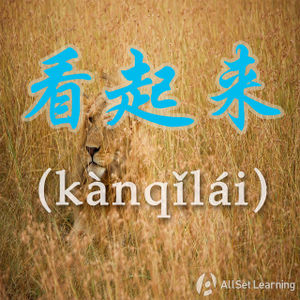Difference between revisions of "Appearance with "kanqilai""
m (Text replace - "{{#seo:keywords={{SEO Keywords}}}}" to " ") |
m (Text replace - "{{Grammar Box}} " to "{{Grammar Box}} ") |
||
| Line 1: | Line 1: | ||
{{Grammar Box}} | {{Grammar Box}} | ||
| − | |||
One of the most common ways to express "it looks like" is to use 看起来 (kànqǐlái). This is what we would use if we wanted to express something like "it seems it's hot outside." | One of the most common ways to express "it looks like" is to use 看起来 (kànqǐlái). This is what we would use if we wanted to express something like "it seems it's hot outside." | ||
Revision as of 05:24, 26 November 2013
-
Level
-
Similar to
-
Used for
-
Keywords
One of the most common ways to express "it looks like" is to use 看起来 (kànqǐlái). This is what we would use if we wanted to express something like "it seems it's hot outside."
Contents
Structure
Just put 看起来 after the subject, as follows:
Subject + 看起来 + Adjective
The subject can be omitted, in which case 看起来 can be followed with a whole statement.
Examples
- 这 个 看 起来 很 漂亮。This looks very pretty.
- 他 看 起来 很 友好。He looks friendly.
- 这 些 食物 看 起来 很 好吃。This food looks really tasty.
- 你 今天 看 起来 很 累。You looks really tired today.
- 这 家 餐厅 看 起来 不错。This restaurant looks good.
See also
- Result complement "-qilai"
- "It seems" with "haoxiang"
- Further uses of resultative complement "qilai"
Sources and further reading
Books
- Integrated Chinese: Level 2, Part 1 (pp. 241-2) →buy
Websites
Videos
- Yoyo Chinese: "You look Pretty"



